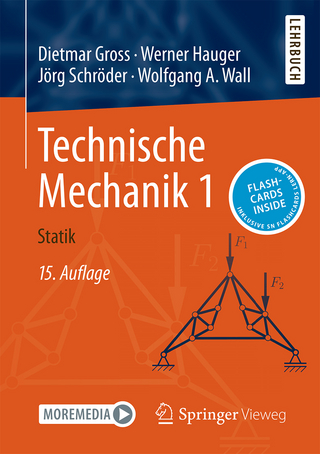
Innovations in Satellite Communications and Satellite Technology
John Wiley & Sons Inc (Verlag)
9781118984055 (ISBN)
Surveys key advances in commercial satellite communications and what might be the implications and/or opportunities for end-users and service providers in utilizing the latest fast-evolving innovations in this field
This book explores the evolving technical options and opportunities of satellite networks. Designed to be a self-contained reference, the book includes background technical material in an introductory chapter that will serve as a primer to satellite communications. The text discusses advances in modulation techniques, such as DBV-S2 extensions (DVS-S2X); spotbeam-based geosynchronous and medium earth orbit High Throughput Satellite (HTS) technologies and Internet applications; enhanced mobility services with aeronautical and maritime applications; Machine to Machine (M2M) satellite applications; emerging ultra HD technologies; and electric propulsion. The author surveys the latest innovations and service strategies and the resulting implications, which involves:
Discussing advances in modulation techniques and HTS spotbeam technologies
Surveying emerging high speed aeronautical mobility services and maritime and other terrestrial mobility services
Assessing M2M (machine-to-machine) applications, emerging Ultra HD video technologies and new space technology
Satellite communication is an integral part of the larger fields of commercial, television/media, government, and military communications, because of its multicast/broadcast capabilities, mobility, reliability, and global reach. High Throughput Satellites) are expected to revolutionize the field during this decade, providing very high speed, yet cost-effective, Internet access and connectivity anywhere in the world, in rural areas, in the air, and at sea. M2M connectivity, enabled by satellite communications, connects trucks on transcontinental trips, aircraft in real-time-telemetry aggregation, and mercantile ships.
A comprehensive analysis of the new advances in satellite communications, Innovations in Satellite Communications Technology is a reference for telecommunications and satellite providers and end-users, technology investors, logistic professionals, and more.
DANIEL MINOLI has worked extensively in satellite, internet, video, and VoIP engineering, design, and implementations at SES, AT&T, Telcordia (Ericsson), and Bell Telephone Laboratories. He taught at Stevens Institute of Technology, NYU's Information Technology Institute, and at Rutgers University. Mr. Minoli has authored columns for ComputerWorld, NetworkWorld, and Network Computing magazines. He often serves as an Expert Witness in patent infringement/invalidity lawsuits. He is the author of more than ten Wiley publications.
Preface xi
Acknowledgments xiii
About the Author xv
1 Overview 1
1.1 Background 2
1.2 Industry Issues and Opportunities: Evolving Trends 6
1.2.1 Issues and Opportunities 6
1.2.2 Evolving Trends 9
1.3 Basic Satellite Primer 15
1.3.1 Satellite Orbits 15
1.3.2 Satellite Transmission Bands 22
1.3.3 Satellite Signal Regeneration 32
1.3.4 Satellite Communication Transmission Chain 34
1.4 Satellite Applications 38
1.5 Satellite Market View 42
1.6 Where is Fiber Optic Technology Going? 45
1.7 Innovation Needed 47
References 48
2 DVB-S2 Modulation Extensions and Other Advances 51
2.1 Part 1: A Review of Modulation and FEC Principles 52
2.1.1 Eb/No Concepts 52
2.1.2 FEC Basics 56
2.1.3 Filters and Roll-Off Factors 63
2.2 Part 2: DVB-S2 and DVB-S2 Extensions 71
2.2.1 DVB-S2 Modulation 71
2.2.2 DVB-S2 Extensions 77
2.3 Part 3: Other Ground-Side Advances 84
2.3.1 Carrier ID 84
2.3.2 Intelligent Inverse Multiplexing 87
2.3.3 Implications of H.265 Coding 91
References 93
3 High Throughput Satellites (HTS) and KA/KU Spot Beam Technologies 95
3.1 Overview 98
3.2 Multiple Access Schemes and Frequency Reuse 101
3.3 Spot Beam Approach 105
3.4 Frequency Colors 109
3.5 Frequency Bands of Operation 114
3.6 Losses and Rain Considerations 122
3.7 HTS Applications 124
3.8 Comparison Between Approaches 128
3.9 A View of KU-Based HTS Systems 131
3.10 HTS Design Considerations 134
3.11 Spot Beam Antenna Design Basics (Satellite Antenna) 135
3.11.1 Single Feed per Beam Antennas 138
3.11.2 Multiple Feeds per Beam Antennas 140
3.12 Examples of HTS 142
3.12.1 ViaSat-1 and -2 143
3.12.2 EchoStar 145
3.12.3 Eutelsat KA-SAT 147
3.12.4 Intelsat EPIC 149
3.12.5 Global Xpress 151
3.12.6 Other Traditional HTS 151
3.12.7 O3b 153
3.12.8 Wideband Global Satcom (WGS) 156
References 157
4 Aeronautical Mobility Services 161
4.1 Overview of the Mobility Environment 162
4.2 Aeronautical Systems 166
4.2.1 Market Opportunities 166
4.2.2 Technology Approaches to Aeronautical Connectivity 168
4.2.3 Aeronautical Antenna Technology and Regulatory Matters 175
4.2.4 Terminal Technology 178
4.2.5 A Specific Example of Antenna Engineering (ViaSat) 178
4.2.6 Beamforming and Ground-Based Beam Forming (GBBF) Systems 188
4.3 Technology Players and Approaches 192
4.3.1 Satellite Infrastructure Providers 192
4.3.2 Vertical Service Providers to Airlines 198
References 205
5 Maritime and Other Mobility Services 207
5.1 Approaches to Maritime Communication 207
5.2 Key Players 212
5.2.1 Inmarsat 212
5.2.2 ViaSat/KVH 212
5.2.3 Intelsat 213
5.2.4 O3b 213
5.3 Comms-On-The-Move Applications 216
5.4 HTS/Ka-Band Transportable Systems 217
References 219
6 M2M Developments and Satellite Applications 221
6.1 A General Overview of the Internet of Things and M2M 222
6.2 M2M Frameworks 233
6.3 M2M Applications Examples and Satellite Support 241
6.3.1 Examples of General Applications 242
6.3.2 Satellite Roles Context and Applications 254
6.3.3 Antennas for Satellite M2M Applications 255
6.3.4 M2M Market Opportunities for Satellite Operators 256
6.3.5 Key Satellite Industry Players and Approaches 263
6.4 Competitive Wireless Technologies 282
6.4.1 Universal Mobile Telecommunications System (UMTS) 291
6.4.2 Long-Term Evolution (LTE) 291
References 294
7 Ultra HD Video/TV and Satellite Implications 297
7.1 H.265 in the Ultra HD Context 298
7.2 Bandwidth/Transmission Requirements 313
7.3 Terrestrial Distribution 315
7.4 Satellite Distribution 316
7.5 Hybrid Distribution 317
7.6 Deployment Challenges Costs Acceptance 319
References 319
8 Satellite Technology Advances: Electric Propulsion and Launch Platforms 321
8.1 Basic Technology and Approach for Electric Propulsion 322
8.2 EP Engines 328
8.2.1 Ion Engines 330
8.2.2 Hall Effect Thrusters 330
8.2.3 MagnetoPlasma Dynamic Thruster 333
8.3 Advantages and Disadvantages of all-EP 335
8.4 Basics About Station-Keeping 337
8.5 Industry Approaches 340
8.6 New Approaches and Players for Launch Platforms 342
8.6.1 Space Exploration Technologies Corporation (SpaceX) 342
8.6.2 Sea Launch 344
8.6.3 Traditional Launchers 344
References 345
Appendix 8A Transponder Costs 347
8A.1 Typical SG&A and EBITDA for the General Commercial World and Satellite Firms 347
8A.2 Transponder Costs 354
References 356
Appendix A Partial Listing of System-Level US Patents for Spot-Beam/Multi-Beam Satellites 357
Appendix B Glossary of Key Satellite Concepts and Terms 367
Index 413
| Verlagsort | New York |
|---|---|
| Sprache | englisch |
| Maße | 164 x 241 mm |
| Gewicht | 866 g |
| Themenwelt | Naturwissenschaften ► Physik / Astronomie ► Mechanik |
| Technik ► Elektrotechnik / Energietechnik | |
| Technik ► Nachrichtentechnik | |
| ISBN-13 | 9781118984055 / 9781118984055 |
| Zustand | Neuware |
| Informationen gemäß Produktsicherheitsverordnung (GPSR) | |
| Haben Sie eine Frage zum Produkt? |
aus dem Bereich


